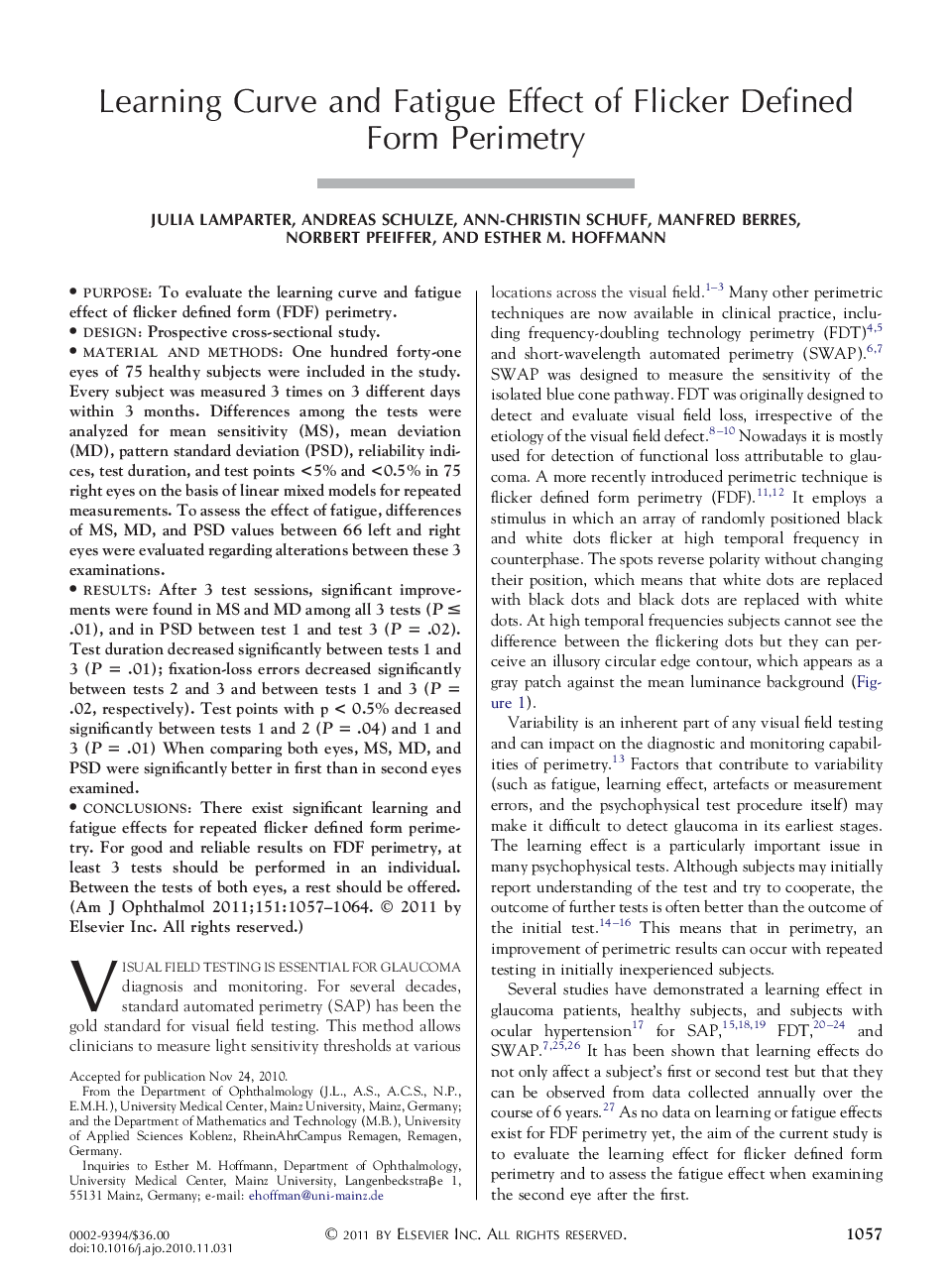| Article ID | Journal | Published Year | Pages | File Type |
|---|---|---|---|---|
| 6196135 | American Journal of Ophthalmology | 2011 | 9 Pages |
PurposeTo evaluate the learning curve and fatigue effect of flicker defined form (FDF) perimetry.DesignProspective cross-sectional study.Material and MethodsOne hundred forty-one eyes of 75 healthy subjects were included in the study. Every subject was measured 3 times on 3 different days within 3 months. Differences among the tests were analyzed for mean sensitivity (MS), mean deviation (MD), pattern standard deviation (PSD), reliability indices, test duration, and test points <5% and <0.5% in 75 right eyes on the basis of linear mixed models for repeated measurements. To assess the effect of fatigue, differences of MS, MD, and PSD values between 66 left and right eyes were evaluated regarding alterations between these 3 examinations.ResultsAfter 3 test sessions, significant improvements were found in MS and MD among all 3 tests (P ⤠.01), and in PSD between test 1 and test 3 (P = .02). Test duration decreased significantly between tests 1 and 3 (P = .01); fixation-loss errors decreased significantly between tests 2 and 3 and between tests 1 and 3 (P = .02, respectively). Test points with p < 0.5% decreased significantly between tests 1 and 2 (P = .04) and 1 and 3 (P = .01) When comparing both eyes, MS, MD, and PSD were significantly better in first than in second eyes examined.ConclusionsThere exist significant learning and fatigue effects for repeated flicker defined form perimetry. For good and reliable results on FDF perimetry, at least 3 tests should be performed in an individual. Between the tests of both eyes, a rest should be offered.
